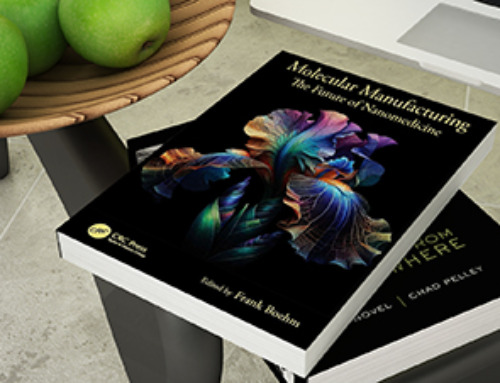A study reveals that a new sequencing technique, tARC-seq, can accurately track mutations in SARS-CoV-2, providing insights into the rapid evolution and variant development of the virus.
The SARS-CoV-2 virus that causes COVID has the unsettling ability of often generating variants of itself. Other viruses also mutate, but as SARS-CoV-2 quickly spread throughout the entire human population during the pandemic, killing millions, the virus' dynamic evolution posed a serious problem: it repeatedly challenged our bodies' immune response fighting the virus and hindered the process of getting updated vaccines ready.
Understanding the genetic mechanism fueling SARS-CoV-2's ability to generate variants can go a long way in keeping COVID at bay. In this study published today (April 22) in Nature Microbiology, researchers at Baylor College of Medicine and collaborating institutions developed a new technology called tARC-seq that revealed a genetic mechanism affecting SARS-CoV-2 divergence and enabled the team to calculate SARS-CoV-2's mutation rate. Using tARC-seq, the researchers also captured new mutations in SARS-CoV-2 in infected cells in the lab that recapitulated observations revealed by worldwide pandemic viral sequencing data. The findings can be useful for monitoring viral evolution in the human population.
Advancements in RNA Replication Analysis
"The SARS-CoV-2 virus uses RNA, instead of DNA, to store its genetic information. Our lab has long been interested in studying RNA biology, and when SARS-CoV-2 emerged we decided to investigate its process of RNA replication, which is typically error-prone in RNA viruses," said corresponding author Dr. Christophe Herman, professor of molecular and human genetics and of molecular virology and microbiology at Baylor.
The researchers wanted to follow RNA replication errors because they are crucial for understanding how the virus evolves, how it changes and adapts as it spreads in the human population, but current methods lacked the precision to detect rare new SARS-CoV-2 mutations, particularly in samples with a low number of viruses, such as those from patients.
"Because samples from patients have very few SARS-CoV-2 RNA copies, it is difficult to distinguish between the errors made by SARS-CoV-2 RNA-dependent RNA polymerase (RdRp), the enzyme that makes copies this virus' RNA, and the errors from the other enzymes used in the sequence analysis," said Herman, a member of the Dan L Duncan Comprehensive Cancer Center. "We have developed a technique that we call Targeted Accurate RNA Consensus sequencing (tARC-seq), which allows us to measure true errors when copying specific RNA present in very low amounts."
Insights Into Variant Formation
Originally, the thought was that, because SARS-CoV-2 has an internal mechanism to repair the mistakes RdRp makes, then the virus should not evolve or mutate very quickly.
"This idea contrasted with the fact that during the pandemic new COVID variants emerged often around the world," Herman said. "Since the pandemic began, we've seen a number of prominent variants, including Alpha, Beta, Delta and Omicron, as well as variants within these groups."
With their improved analytical tool in hand, Herman and his colleagues accurately determined the mutation frequency of SARS-CoV-2 and types of mutations, both in cell cultures in the lab and clinical samples. "We found that the mutation rate was higher than originally expected and this helps explain the frequent appearance of COVID variants," Herman said.
They also discovered that there are hotspots in SARS-CoV-2 RNA, locations that are more prone to mutation than others. "For example, we identified a hotspot on the RNA region corresponding to the spike protein, the protein that allows the virus to invade cells. Also, RNA of the spike protein makes up many vaccines," Herman said.
The tARC-seq method also revealed that the generation of new variants involved template switching. "We determined that, as RdRp is copying one RNA template or sequence, it jumps to another template on a nearby virus and then continues copying the RNA, so the resulting new RNA copy is a mixture of both RNA templates," Herman said. "This template switching will result in sequence insertions or deletions that bring about viral variability. We also observed complex mutations. SARS-CoV-2 takes advantage of these two powerful biological mechanisms, template switching and complex mutations, that allow it to evolve quickly, generating variants to adapt to and persevere in human populations."
"It was interesting and exciting to see that tARC-seq allowed us to capture in laboratory cell cultures the emergence of new mutations that recapitulate the mutations observed with worldwide pandemic sequencing data," Herman said. "Our new technology captures a snapshot of new mutations in clinical samples from individual patients and can be useful for monitoring viral evolution in the human population."
Reference: "Targeted Accurate RNA Consensus sequencing (tARC-seq) reveals mechanisms of replication error affecting SARS-CoV-2 divergence" 22 April 2024, Nature Microbiology.
DOI: 10.1038/s41564-024-01655-4
First author Catherine C. Bradley, Chen Wang, Alasdair J.E. Gordon, Alice X. Wen, Pamela N. Luna, Matthew B. Cooke, Brendan F. Kohrn, Scott R. Kennedy, Vasanthi Avadhanula, Pedro A. Piedra, Olivier Lichtarge, Chad A. Shaw and Shannon E. Ronca are contributors to this work. The authors are affiliated with one or more of the following institutions: Baylor College of Medicine, University of Washington, and Texas Children's Hospital.
The study was supported by National Institutes of Health grants R01GM088653, 3R01AG061105-03S1, 1R21CA259780 and 1R21HG011229, and by National Science Foundation grant DBI-2032904.
News
Two New Books From Frank Boehm, NA Founder – To be Released Dec. 2025
Molecular Manufacturing: The Future of Nanomedicine This book explores the revolutionary potential of atomically precise manufacturing technologies to transform global healthcare, as well as practically every other sector across society. This forward-thinking volume examines [...]
What could the future of nanoscience look like?
Society has a lot to thank for nanoscience. From improved health monitoring to reducing the size of electronics, scientists’ ability to delve deeper and better understand chemistry at the nanoscale has opened up numerous [...]
Scientists Melt Cancer’s Hidden “Power Hubs” and Stop Tumor Growth
Researchers discovered that in a rare kidney cancer, RNA builds droplet-like hubs that act as growth control centers inside tumor cells. By engineering a molecular switch to dissolve these hubs, they were able to halt cancer [...]
Platelet-inspired nanoparticles could improve treatment of inflammatory diseases
Scientists have developed platelet-inspired nanoparticles that deliver anti-inflammatory drugs directly to brain-computer interface implants, doubling their effectiveness. Scientists have found a way to improve the performance of brain-computer interface (BCI) electrodes by delivering anti-inflammatory drugs directly [...]
After 150 years, a new chapter in cancer therapy is finally beginning
For decades, researchers have been looking for ways to destroy cancer cells in a targeted manner without further weakening the body. But for many patients whose immune system is severely impaired by chemotherapy or radiation, [...]
Older chemical libraries show promise for fighting resistant strains of COVID-19 virus
SARS‑CoV‑2, the virus that causes COVID-19, continues to mutate, with some newer strains becoming less responsive to current antiviral treatments like Paxlovid. Now, University of California San Diego scientists and an international team of [...]
Lower doses of immunotherapy for skin cancer give better results, study suggests
According to a new study, lower doses of approved immunotherapy for malignant melanoma can give better results against tumors, while reducing side effects. This is reported by researchers at Karolinska Institutet in the Journal of the National [...]
Researchers highlight five pathways through which microplastics can harm the brain
Microplastics could be fueling neurodegenerative diseases like Alzheimer's and Parkinson's, with a new study highlighting five ways microplastics can trigger inflammation and damage in the brain. More than 57 million people live with dementia, [...]
Tiny Metal Nanodots Obliterate Cancer Cells While Largely Sparing Healthy Tissue
Scientists have developed tiny metal-oxide particles that push cancer cells past their stress limits while sparing healthy tissue. An international team led by RMIT University has developed tiny particles called nanodots, crafted from a metallic compound, [...]
Gold Nanoclusters Could Supercharge Quantum Computers
Researchers found that gold “super atoms” can behave like the atoms in top-tier quantum systems—only far easier to scale. These tiny clusters can be customized at the molecular level, offering a powerful, tunable foundation [...]
A single shot of HPV vaccine may be enough to fight cervical cancer, study finds
WASHINGTON -- A single HPV vaccination appears just as effective as two doses at preventing the viral infection that causes cervical cancer, researchers reported Wednesday. HPV, or human papillomavirus, is very common and spread [...]
New technique overcomes technological barrier in 3D brain imaging
Scientists at the Swiss Light Source SLS have succeeded in mapping a piece of brain tissue in 3D at unprecedented resolution using X-rays, non-destructively. The breakthrough overcomes a long-standing technological barrier that had limited [...]
Scientists Uncover Hidden Blood Pattern in Long COVID
Researchers found persistent microclot and NET structures in Long COVID blood that may explain long-lasting symptoms. Researchers examining Long COVID have identified a structural connection between circulating microclots and neutrophil extracellular traps (NETs). The [...]
This Cellular Trick Helps Cancer Spread, but Could Also Stop It
Groups of normal cbiells can sense far into their surroundings, helping explain cancer cell migration. Understanding this ability could lead to new ways to limit tumor spread. The tale of the princess and the [...]
New mRNA therapy targets drug-resistant pneumonia
Bacteria that multiply on surfaces are a major headache in health care when they gain a foothold on, for example, implants or in catheters. Researchers at Chalmers University of Technology in Sweden have found [...]
Current Heart Health Guidelines Are Failing To Catch a Deadly Genetic Killer
New research reveals that standard screening misses most people with a common inherited cholesterol disorder. A Mayo Clinic study reports that current genetic screening guidelines overlook most people who have familial hypercholesterolemia, an inherited disorder that [...]





















